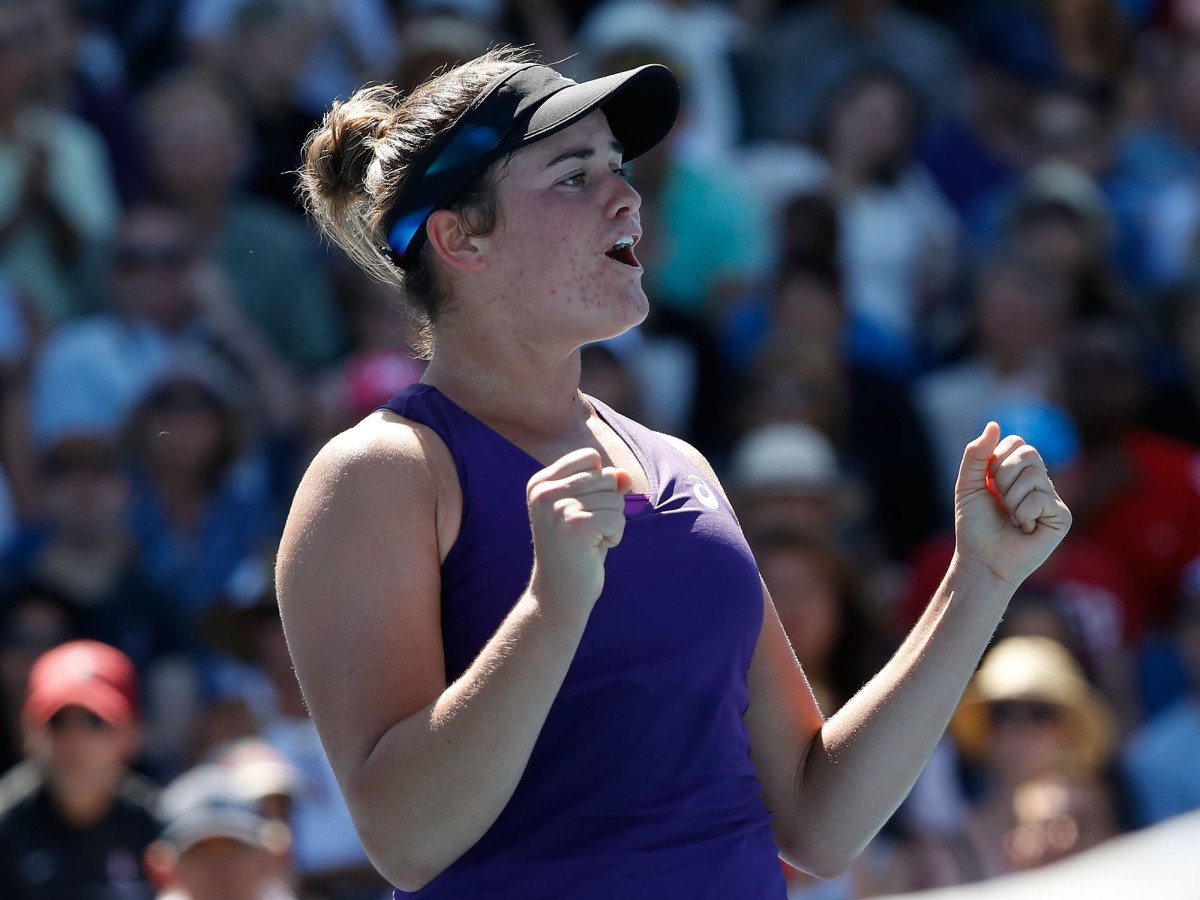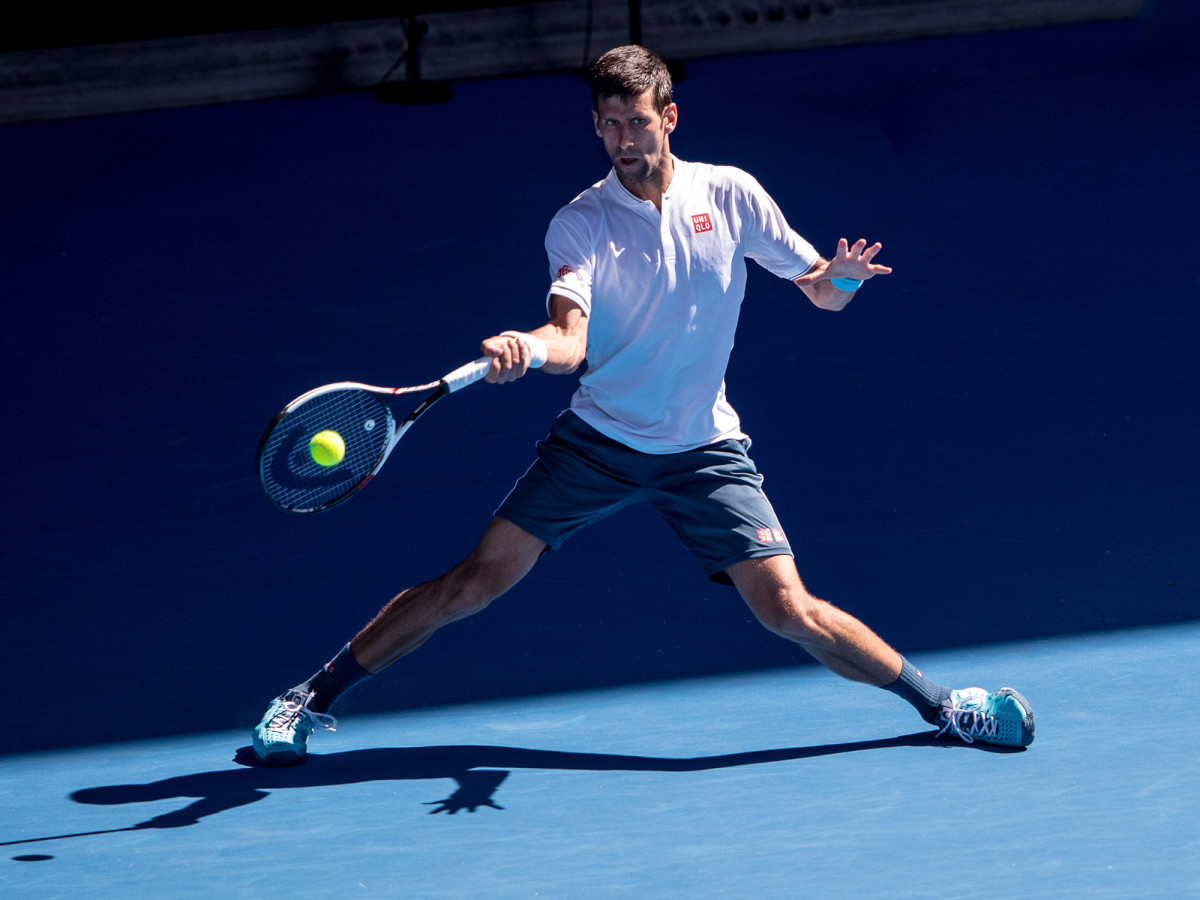Federer, Venus, Brady and British tennis lead 2017 Australian Open midterm grades

MELBOURNE – Through three rounds, the Australian Open looks thoroughly familiar. In some respects, anyway. Roger Federer is coming off a preserve-in-amber match, showing off the extravagant tennis he first displayed in the early years. Venus Williams, his senior by a year, hasn't dropped a set. Neither has her sister. Nor has 2009 champ Rafael Nadal, who deployed his ground-and-pound make-the-kid-suffer game in beating Alexander Zverev in round three. At age 34 Mirjana Lucic-Baroni—whose previous Aussie Open singles win came in 1998—is still in the draw. No American men made it beyond round three, a lamentably familiar result as well.
In other respects, the event is barely recognizable. Most glaring is the absence of six-time champ Novak Djokovic, sent off in round two. Nick Kyrgios, featured on so much promotional material, bowed out, triggering the usual questions about maturity. Players remaining have names like Brady, Evans and M. Zverev. Who? Huh?
This is a sport in transition. Or maybe not. By next week we’ll know whether it’s old d. new …or new d. old. But for now, through three rounds, our 2017 Australian Open midterm grades….
A
Roger Federer
After two rusty wins, Federer unfurled a performance for the Greatest Hits LP in his third-rounder against Tomas Berdych, the No. 10 seed. If RF can come close to sustaining this level, look out….
Siblings
We have two Williams sisters (combined age 71). We had two Zverevs through three rounds. And we nearly had Pliskovii remaining, had Kristyna (Russell Crowe’s pick) not run into top-seeded Angie Kerber.
Venus Williams
Through to round four without dropping a set and giddy about it. As she should be.

Jen Brady
The middle child jokes have already gotten stale. What’s fresh? Another product of college tennis (UCLA) making it as a pro. The 20-year-old is into round four, guaranteeing herself a top 100 ranking and around $170,000.
British tennis
Andy Murray, the top seed, we expected. Jo Konta, not unsurprisingly, remains. But how about Dan Evans taking out Marin Cilic and Bernard Tomic and reaching Week Two? Give that man an outfit.
Denis Istomin
Beating Novak Djokovic in five sets is a career win. But backing that up with another five-set win is the sign of a pro.
B-plus
Noah Rubin
Young American qualifies, wins a round and holds his own against Roger Federer before capitulating. Bonus points for representing the rare American whose backhand is as good as his forehand.
B
American men
Kudos that so many made the main draw, including four who qualified. But by Friday none remained.
Alison Riske
Good for her winning two matches, her first wins at a major in more than 900 days. Her third round loss against Sorana Cirstea goes down as a winnable one that got away.
Wild cards
This policy needs to be reexamined. It’s like insider trading for the four countries fortunate enough to host a Slam. Then again, wild cards made the appearance of retired cricketresse Ash Barty (No. 223) possible.
Shelby Rogers
After knocking off Simona Halep and again proving herself a good big match player, it was surprising that Rogers didn't have more against Ash Barty who was coming off her cricket rumspringa.

C
Novak Djokovic
He gets a “plus” for the grace in which he handled the defeat. But we’re in crisis mode now. Lose at Wimbledon weeks after the winning the French—your career holy grail—and it's understandable. Lose in the U.S. Open and you got to the last round. Lose at the Australia—which you've spent the better part of a decade dominating—to an older player in situ outside the top 100 and it's time to ask yourself some difficult questions.
Nick Kyrgios
His “plus” comes account of his stellar play in round one, which highlighted the potential we all mention. But tennis great rivalry pits Kyrgios’ talent and magnetism against his immaturity and volatility. Both were on display when he lost in round two to Andreas Seppi.
Jamie Murray and Bruno Soares
Defending champs fall to Sam Querrey and Donald Young. Were it not for Novak Djokovic, this might be the upset of the tournament.
Simona Halep
Simply too good a player to take so many mystifying losses. Even physically compromised, she shouldn't be losing in the first round of a hard court Slam two years in a row.
Injury Blaming
We invoke the old Aussie expression “If you play, you’re fit. If you’re fit, you play.” Way too many postmortems went like this: “I hurt my knee. And the elbow acted up. And I got a bee sting. And my pollen allergies were bad. And I had a minor case of halitosis. But no excuses. I don’t want to take anything away from my opponent.”
Rise in retirements at the Australian Open and how it relates to injuries it today's game
Homeless population displacement
As the excellent Melbourne columnist Greg Baum put it on Twitter: “Sick society that thinks the problem with rough sleepers at Flinders St. is that they're an eyesore for tourists, not that they have no home.”
